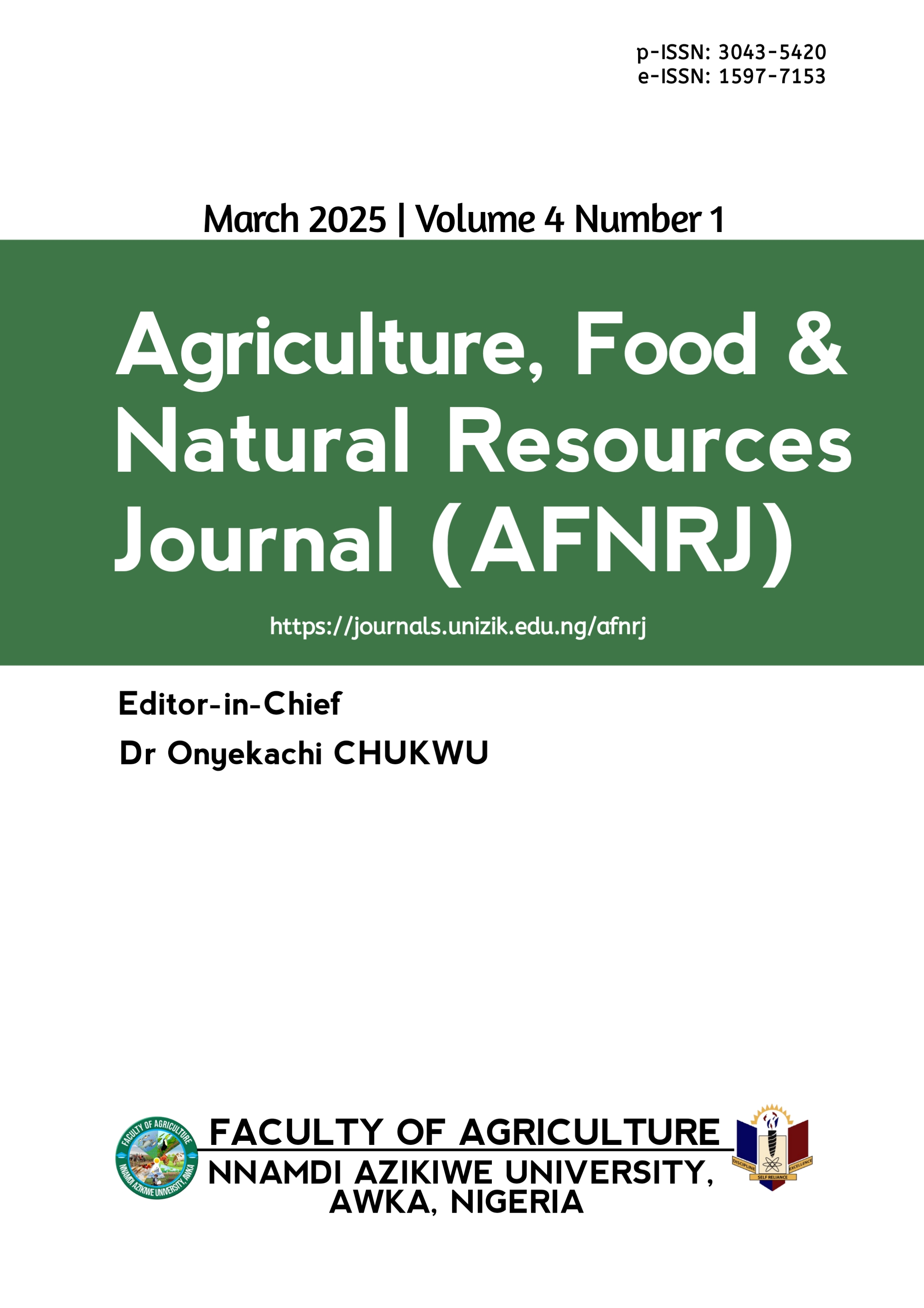Assessment of social media usage among cashew farmers in Kwara State, Nigeria
DOI:
https://doi.org/10.5281/zenodo.15112966Keywords:
Cashew farmers, Digital skill, Social media, UsageAbstract
The rapid rise in social media usage presents opportunities for cashew farmers to access market information and improve productivity. This study investigated social media usage among cashew farmers in Kwara State, Nigeria. A two-stage sampling technique was employed. In the first stage, Offa, Oyun, and Asa Local Government Areas (LGAs) were purposively selected for their high concentration of registered cashew farmers. In the second stage, proportionate sampling was used to allocate the sample size across these LGAs of the State based on their share of registered cashew farmers. Using Yamane’s formula, a total sample size of 162 farmers was determined at a 6.6% precision level from a target population of 550 registered cashew farmers. Data were collected through structured questionnaires. The collected data were then analyzed using descriptive statistics and ordinal logistic regression. Findings revealed that respondents were predominantly male (56.8%), with a mean age of 41 years, and most were married (78.4%) with an average household size of 7 persons. Secondary education was the highest level attained by 40.7% of respondents, and farming experience averaged 11 years. The level of social media usage among cashew farmers was found to be moderate. However, significant constraints hindered usage, including difficulty engaging clients with a Weight Average Index (WAI) of 2.62 and limited time availability (WAI = 1.95). The study recommends targeted educational programs by agricultural extension services and investments in rural infrastructure, particularly electricity and internet connectivity, to enhance social media usage and improve market reach among cashew farmers.
Downloads
Published
Issue
Section
License

This work is licensed under a Creative Commons Attribution 4.0 International License.
which permits unrestricted use, distribution, and reproduction in any medium, provided the original author and source are credited.
Authors retain the copyright of their published work in the AFNRJ.





